Xinjiang, officially known as the Xinjiang Uyghur Autonomous Region, is located in the northwest of China. It is the largest Chinese administrative division and shares borders with eight countries, including Mongolia, Russia, Kazakhstan, Kyrgyzstan, Tajikistan, Afghanistan, Pakistan, and India. Known for its vast deserts, towering mountains, and diverse culture, Xinjiang Province is home to several ethnic groups, with the Uyghurs being the largest.
- Location: Northwest China
- Area: 1.66 million square kilometers (640,000 square miles), making it the largest administrative division in China.
- Deserts: Home to the Taklamakan Desert, one of the largest sandy deserts in the world.
- Mountains: Includes parts of the Tianshan, Kunlun, and Altai mountain ranges.
- Population:
- Total: Approximately 25 million people.- Ethnic Groups: Uyghurs (largest group), Han Chinese, Kazakhs, Hui, Kyrgyz, Mongols, Tajiks, Uzbeks, Russians, and others.
- Capital: Ürümqi, a major economic and cultural center.
- Languages:
- Official Language: Mandarin Chinese
- Widely Spoken: Uyghur, Kazakh, Kyrgyz, and other minority languages.
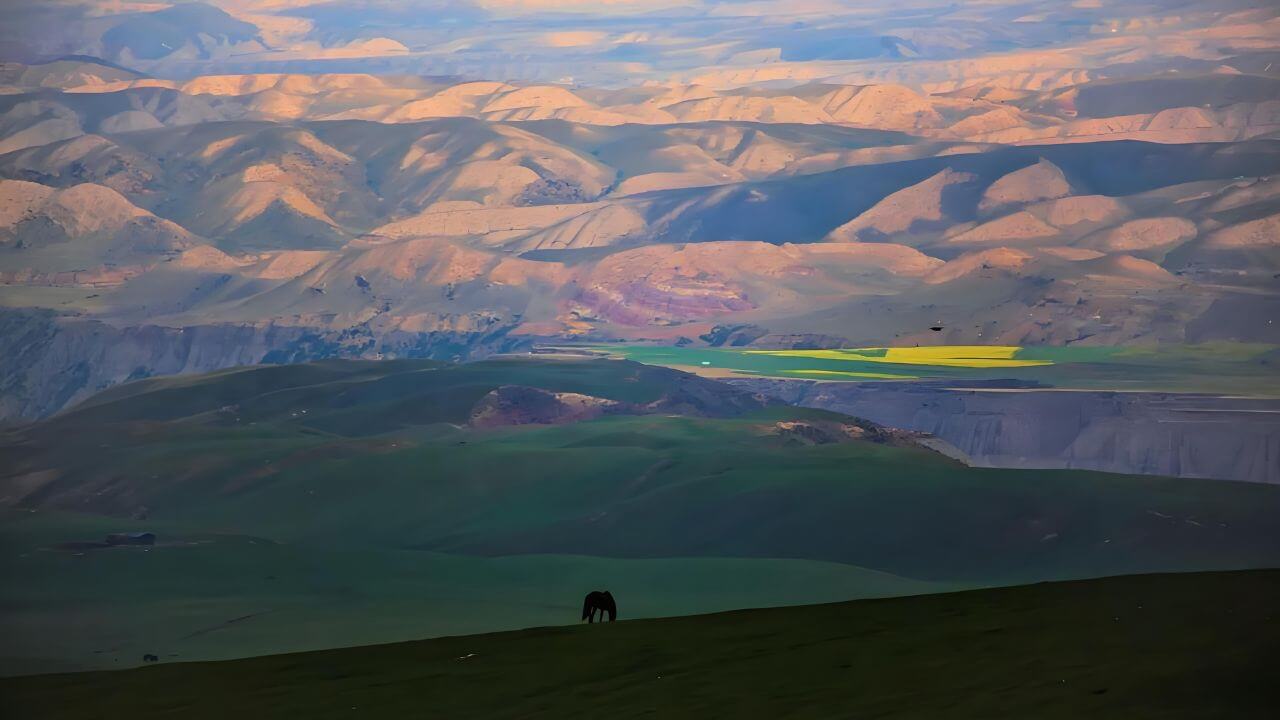
Xinjiang is a journey to the crossroads of civilizations, where ancient Silk Road echoes meet striking deserts and snow-capped mountains in a land of endless discovery.
Urumqi
Urumqi is the capital city of Xinjiang Province, a bustling metropolis, and the largest city in Western China. Historically, as an important hub on the Silk Road, Urumqi has evolved into a major cultural, economic, and transportation center. The city’s name means “beautiful pasture” in Mongolian, reflecting its historical significance as a grazing land for nomadic tribes. Today, Urumqi is known for its diverse cultural heritage, vibrant markets, and stunning natural surroundings. Let’s dive into Urumqi’s major attractions that every traveler who comes to China should visit.
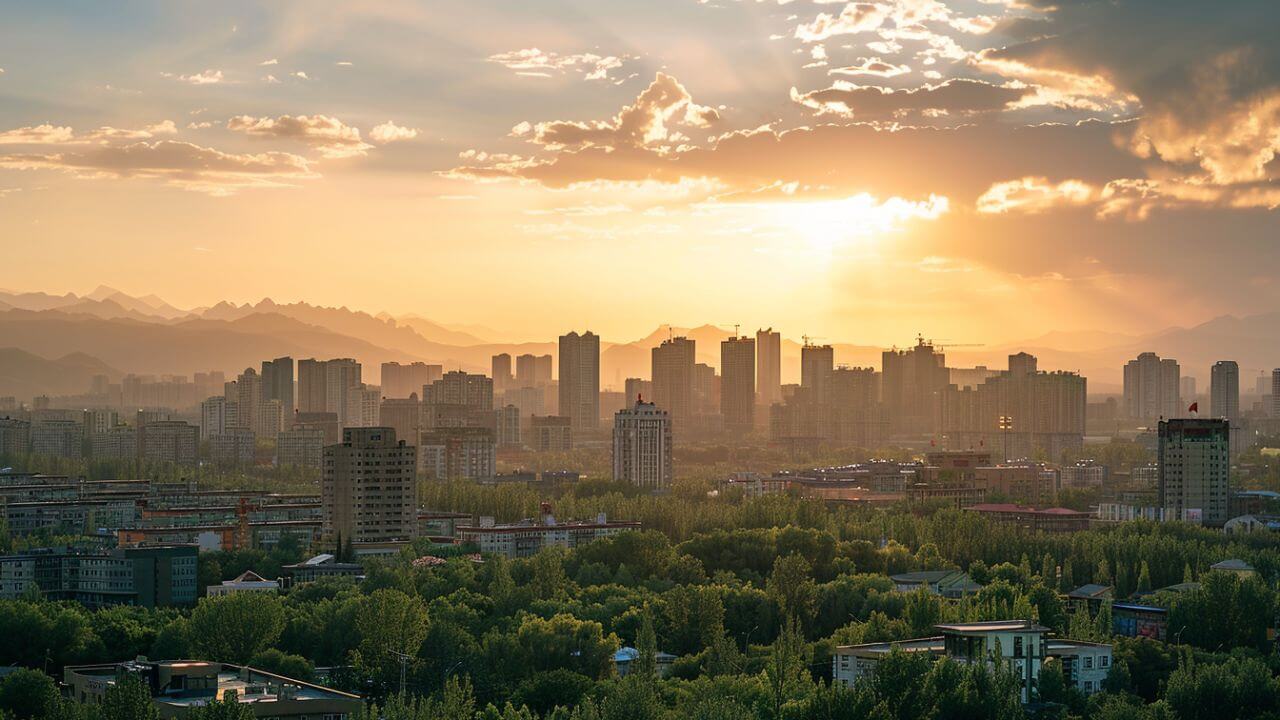
Xinjiang Regional Museum
The Xinjiang Regional Museum in Urumqi is a premier cultural institution that provides a comprehensive overview of the history, culture, and art of the diverse ethnic groups in Xinjiang. Established in 1953, the museum is dedicated to preserving and showcasing the region’s rich heritage, which spans thousands of years. The museum’s modern architecture, spacious galleries, and extensive collections make it a must-visit destination for anyone interested in the fascinating history and cultural tapestry of Xinjiang.
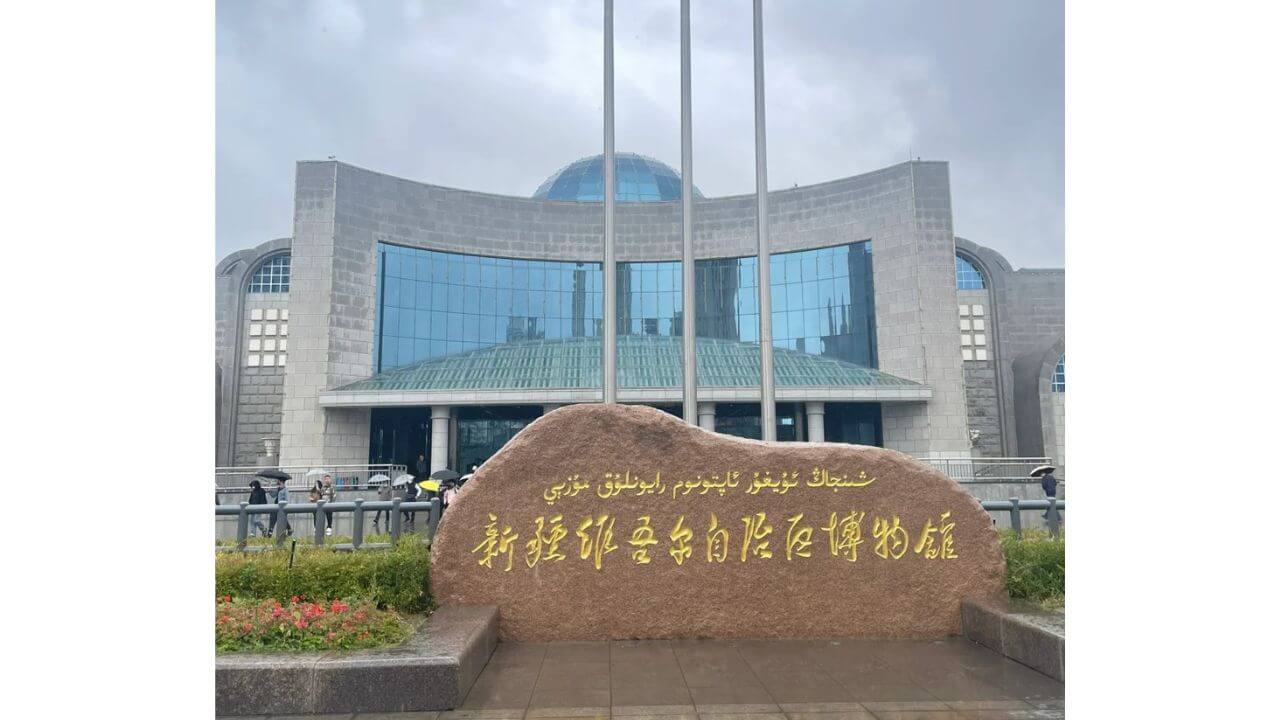
Highlights of the Xinjiang Regional Museum
- Tarim Basin Mummies: Among the museum’s most famous exhibits are the well-preserved mummies from the Tarim Basin, dating back over 4,000 years. Notable mummies include the “Beauty of Loulan,” with distinct Caucasian features, and the “Charchan Man,” recognized for his unique attire.
- Ethnic Culture Exhibits: Explore exhibits dedicated to Xinjiang’s various ethnic groups, featuring traditional clothing, jewelry, tools, and household items that showcase their daily lives and customs.
- Silk Road Displays: Learn about Xinjiang’s role in the ancient Silk Road with displays of ancient coins, silk textiles, and trade goods, highlighting the region’s historical significance in connecting China with the rest of the world.
- Historical Artifacts: Discover artifacts spanning Xinjiang’s history, from prehistoric times to modern days, including pottery, bronze items, and religious relics from various traditions.
- Traditional Uyghur Home Replica: Step inside a life-size replica of a traditional Uyghur home, offering an immersive experience of traditional architecture and daily living practices.
- Folk Art and Handicrafts: Admire intricate embroidery, carpet weaving, wood carvings, and metalwork, showcasing the artistic skills of Xinjiang’s ethnic groups.
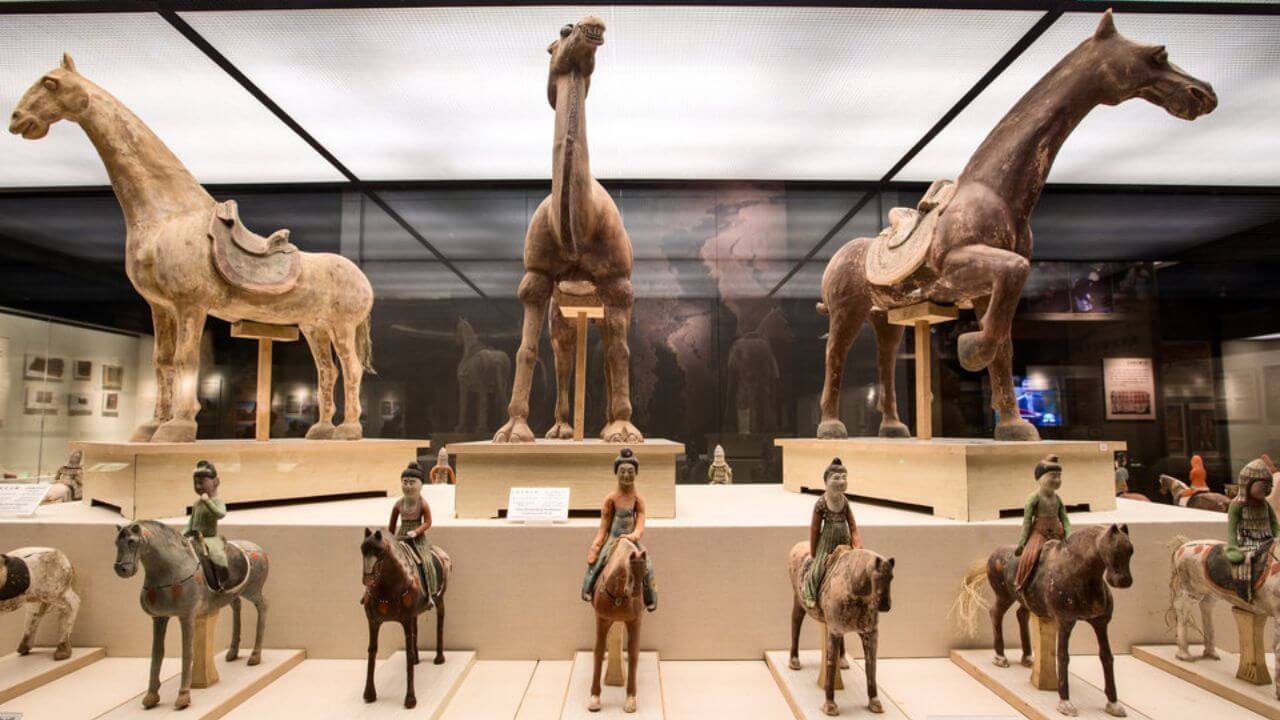
Tips for Visiting the Xinjiang Regional Museum
- The museum is typically open from Tuesday to Sunday, 10:00 AM to 6:00 PM. It is closed on Mondays and public holidays. Check the official website or contact the museum for the latest information on opening hours and any special exhibits.
- Consider joining a guided tour to gain deeper insights into the exhibits.
- You will need at least 2-3 hours to explore the museum thoroughly. The extensive collections and detailed exhibits deserve ample time to be appreciated fully.
- Photography policies may vary, so check with the museum staff regarding any restrictions.
- Don’t forget to visit the museum shop, which offers a variety of souvenirs, books, and replicas of artifacts. These make great mementos of your visit and provide further reading on the region’s history and culture.
Red Hill (Hong Shan)
Red Hill, also known as Hong Shan, is a prominent natural landmark located in the heart of Urumqi. This striking red sandstone hill rises to a height of about 910 meters (2,985 feet) above sea level and offers panoramic views of Urumqi and the surrounding landscapes. Red Hill is not only a natural wonder but also a cultural and recreational hotspot, featuring historical pagodas, scenic pavilions, and well-maintained walking paths.
Highlights of Red Hill (Hong Shan)
- Panoramic Views: Red Hill offers breathtaking panoramic views of Urumqi city and the distant Tianshan Mountains. The hilltop is a popular spot for photography and sightseeing, especially at sunrise and sunset, providing a stunning vantage point to capture the sprawling cityscape.
- Zhenlong Pagoda: Also known as the Dragon Pagoda, this ancient structure atop Red Hill is a symbol of Urumqi. Built during the Qing Dynasty, the pagoda is believed to protect the city from evil spirits. Visitors can explore its historical architecture and enjoy the stunning views from its base.
- Scenic Pavilions: Several traditional Chinese pavilions are scattered across the hill, offering shaded spots to relax and enjoy the scenery. These intricately designed pavilions serve as excellent viewpoints and resting places, enhancing the hill’s tranquil ambiance.
- Walking Paths: The hill is crisscrossed with well-maintained walking paths leading to various viewpoints and historical sites. These paths are perfect for leisurely strolls, offering different perspectives of the hill and the city below, with benches along the way for pauses to appreciate the natural beauty.
- Red Hill Park: Surrounding the hill, Red Hill Park is a green oasis in Urumqi’s urban environment. The park features lush gardens, ponds, and recreational areas, making it a favorite spot for locals to practice tai chi, have picnics, and enjoy outdoor activities.
- Cultural Events: Throughout the year, Red Hill Park hosts various cultural events and festivals, celebrating Xinjiang’s diverse heritage. Visitors can experience traditional music performances, dance shows, and local festivals that add vibrancy to the park.

Travel Tips for Visiting Red Hill (Hong Shan)
- The ideal times to visit Red Hill are in the spring (April to June) and autumn (September to October) when the weather is mild and the skies are clear. Early mornings and late afternoons offer the best lighting and fewer crowds.
- For the best photos, head to the top of Red Hill near Zhenlong Pagoda. The panoramic views of Urumqi and the surrounding mountains are particularly photogenic at sunrise and sunset.
- While the main paths are accessible, some areas may require climbing stairs or navigating uneven terrain. If you have mobility concerns, consult park staff about the most accessible routes.
Xinjiang International Grand Bazaar
The Xinjiang International Grand Bazaar, located in Urumqi, and it is one of the largest and most modern bazaars in China. This expansive market blends traditional Uyghur architecture with contemporary design, creating a unique shopping and cultural experience. Opened in 2003, the bazaar covers an area of over 100,000 square meters and is a major attraction for both locals and tourists. It serves as a cultural hub where visitors can explore a wide range of goods, enjoy traditional performances, and savor local cuisine.
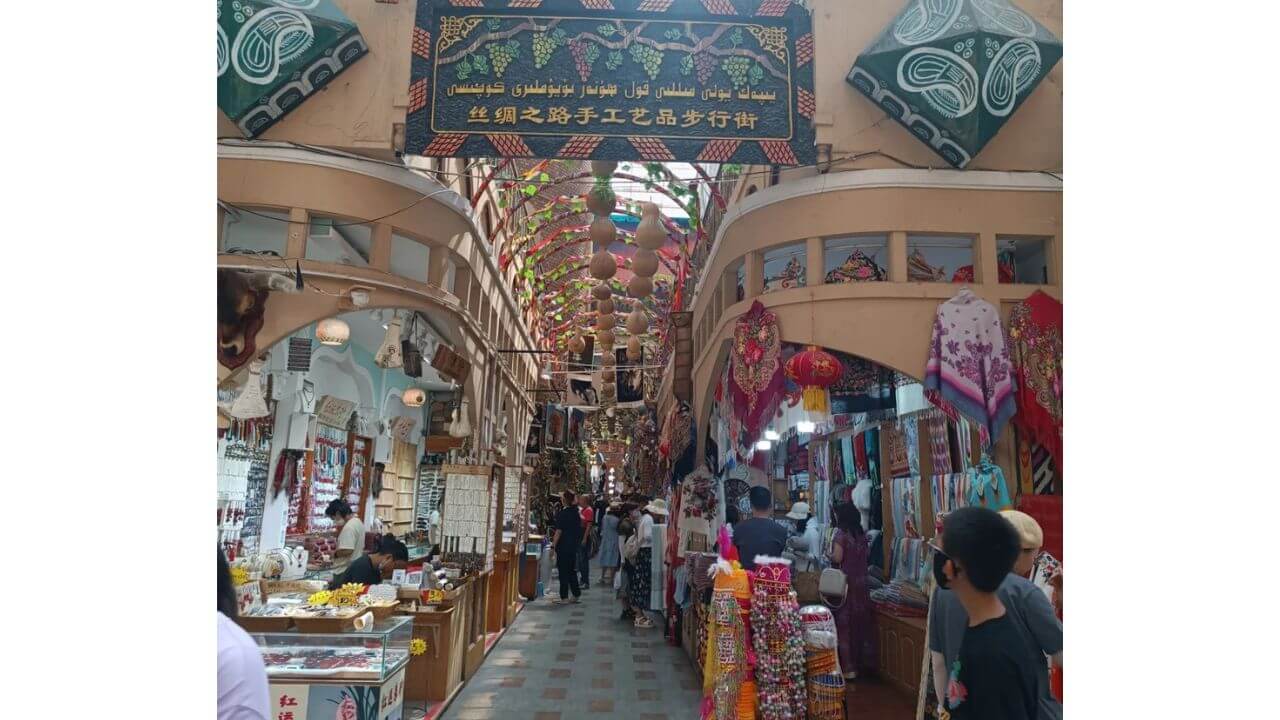
Highlights of Xinjiang International Grand Bazaar
- Architectural Design: The bazaar’s architecture is a striking blend of traditional Uyghur and Islamic styles with modern elements. The central minaret, resembling a traditional Islamic tower, along with intricate tile work, domes, and arches throughout the complex, reflects the rich cultural heritage of Xinjiang.
- Wide Range of Goods: The bazaar offers an extensive variety of products, from traditional Uyghur crafts to modern items. Visitors can shop for handmade carpets, silk scarves, jewelry, pottery, musical instruments, and more. The market also features stalls selling spices, dried fruits, nuts, and other local specialties.
- Cultural Performances: The bazaar frequently hosts traditional Uyghur music and dance performances. These live performances of traditional songs, dances, and instrumental music showcase the vibrant culture of the Uyghur people.
- Dining Options: The bazaar is a food lover’s paradise, offering a wide range of dining options that highlight the diverse cuisine of Xinjiang.
- Souvenir Shopping: The bazaar is an excellent place to find unique souvenirs and gifts. Look for beautifully crafted items such as traditional Uyghur hats, embroidered clothing, and intricate jewelry, which make wonderful souvenirs for your visit to Xinjiang.
- Tea Houses: Traditional tea houses within the bazaar offer a relaxing break from shopping.
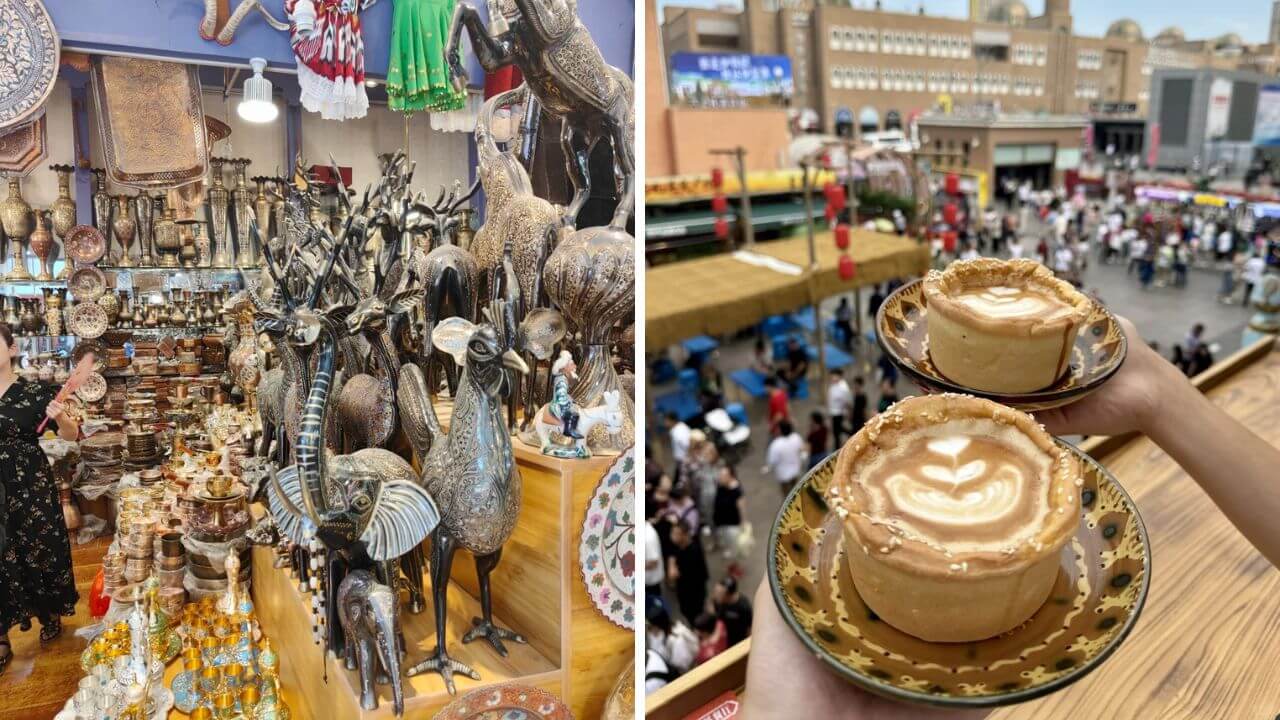
Tips for Visiting the Xinjiang International Grand Bazaar
- The bazaar is open year-round, but the best time to visit is in the late morning or early afternoon.
- Bargaining is common in the bazaar. Start by offering a lower price and negotiate politely.
- Carry enough cash in the local currency (Chinese Yuan) as many vendors do not accept credit cards. ATMs are available within or near the bazaar if needed.
- Don’t miss the opportunity to sample a variety of local dishes. Look for busy food stalls, which usually indicate good quality and freshness.
- Keep an eye on your personal belongings, as the bazaar can be crowded.
- While Mandarin is the official language, many vendors speak Uyghur. Learning a few basic phrases in Mandarin or Uyghur can enhance your shopping experience and interactions with locals.
People’s Park
People’s Park is a large urban park situated in the heart of Urumqi, the capital of Xinjiang Uyghur Autonomous Region in China. This green oasis offers a peaceful retreat from the bustling city, providing a serene environment for relaxation and recreation. Covering an extensive area, People’s Park is a popular destination for both locals and tourists, offering a variety of attractions and activities amidst lush greenery and scenic landscapes.
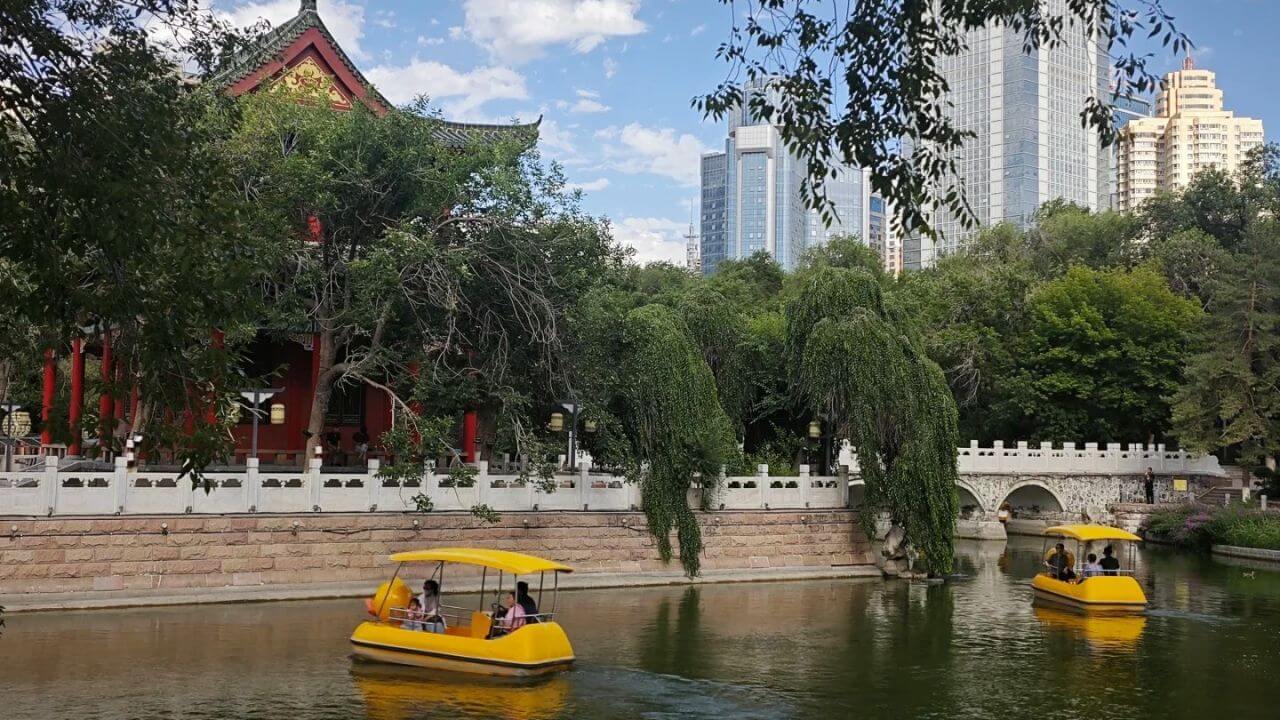
What to See in People’s Park
- Lakes: The park features several picturesque lakes that enhance its peaceful ambiance. You can enjoy boating or relax by the water’s edge.
- Gardens: People’s Park is home to beautifully landscaped gardens, showcasing a variety of plants and flowers.
- Pavilions: Traditional Chinese pavilions are scattered throughout the park, providing shaded areas to rest and enjoy the scenery. These architecturally stunning pavilions, with intricate designs and decorations, offer picturesque views of the park and are perfect for photography.
- Amusement Rides: The park includes a small amusement area with rides and attractions for children and families. Popular rides such as the Ferris wheel, merry-go-round, and bumper cars add a fun and lively element to the park, making it a great destination for families with young children.
- Exercise Areas: People’s Park features designated areas for exercise and fitness activities. Local residents often gather in the mornings for tai chi, group exercises, and dance sessions. The park also offers fitness equipment and jogging paths, promoting a healthy lifestyle.
- Children’s Playgrounds: Several playgrounds within the park cater to young children, offering a safe and enjoyable environment for play.
- Seasonal Festivals: The park hosts various seasonal festivals and events throughout the year, celebrating local culture and traditions. Events such as lantern festivals, flower shows, and cultural performances draw large crowds and contribute to the park’s vibrant atmosphere.
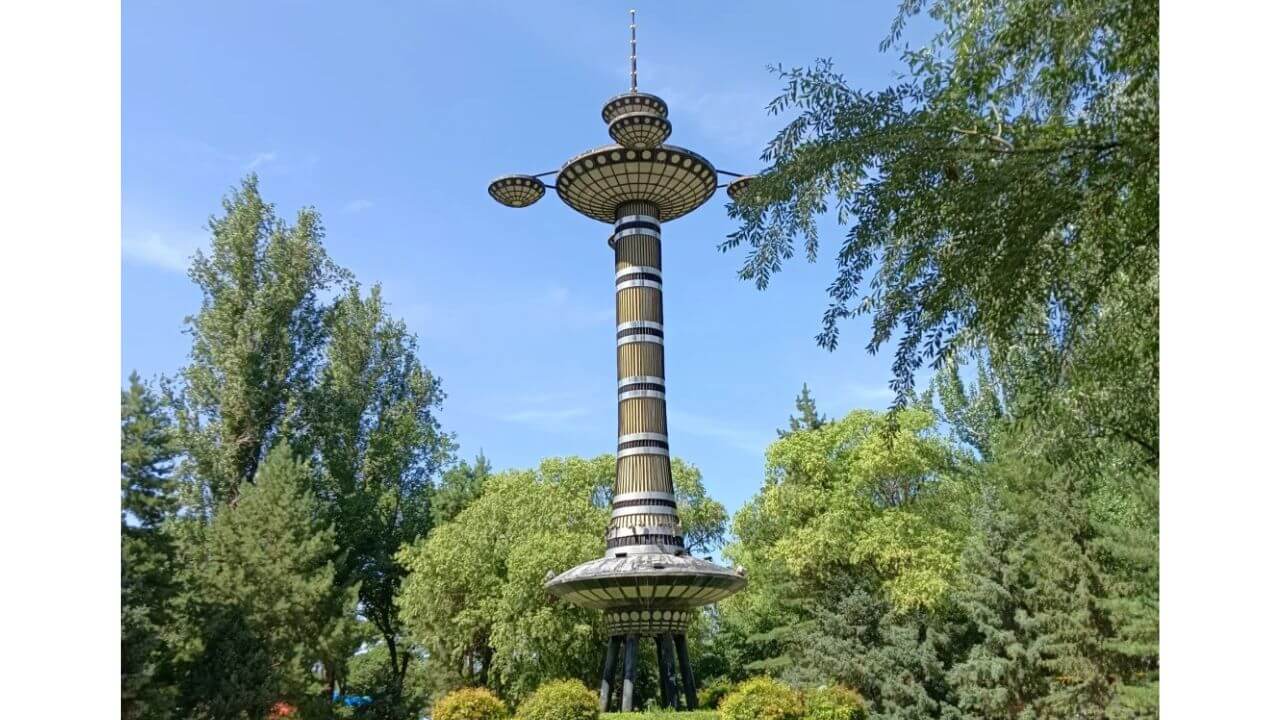
Tips for Visiting People’s Park
- The park is open year-round, but the best times to visit are in the spring (April to June) and autumn (September to October) when the weather is mild, and the gardens are in full bloom.
- Consider bringing a picnic to enjoy on the grassy areas or by the lakes.
- The park is family-friendly, with plenty of activities for children. Plan to spend some time at the playgrounds and amusement rides if you’re visiting with young ones.
- There are food stalls and vendors within the park offering local snacks and refreshments. Try some Uyghur delicacies like lamb skewers and naan bread.
- The park is accessible to visitors with disabilities, with paved paths and accessible restrooms. If you have specific needs, check with park staff for assistance.
Southern Pasture (Nanshan Pasture)
Southern Pasture, also known as Nanshan Pasture, is a picturesque and expansive area located about 75 kilometers (47 miles) south of Urumqi. Nestled in the foothills of the Tianshan Mountains, this scenic area is renowned for its lush meadows, rolling hills, dense forests, and traditional Kazakh yurts. Southern Pasture offers a tranquil escape from the bustling city, providing visitors with stunning natural beauty and a glimpse into the traditional nomadic lifestyle of the local Kazakh people.
Highlights of Southern Pasture (Nanshan Pasture)
- Lush Meadows and Rolling Hills: Enjoy leisurely walks or horseback rides through vibrant green meadows and gentle hills, especially beautiful in summer.
- Kazakh Yurts: Experience traditional Kazakh culture by staying in yurts, enjoying local hospitality, meals, and cultural activities like folk music and dance.
- Horseback Riding: Explore the scenic terrain, including valleys and forests, on guided horseback tours, reflecting the nomadic heritage of the Kazakh people.
- West White Poplar Gully: Hike through dense forests and clear streams in this picturesque area, perfect for nature lovers and photographers.
- East White Poplar Gully: Ideal for hiking and picnicking, this gully offers stunning views, especially in autumn when the foliage turns golden.
- Waterfalls and Streams: Discover numerous streams and waterfalls that enhance the area’s natural beauty, especially picturesque in spring and early summer.
- Cultural Experiences: Engage with Kazakh culture through traditional games, music, and crafts, providing insight into the local way of life.

Travel Tips for Visiting Southern Pasture (Nanshan Pasture)
- Best Time to Visit: Late spring to early autumn (May to September) is ideal for mild weather and lush scenery.
- Clothing: Dress in layers for changing weather; bring a warm jacket and comfortable shoes.
- Transportation: It’s about 1.5 hours from Urumqi by taxi, car, or guided tour. Public transport is limited.
- Local Guides: Consider hiring a guide for insights into the area and arranging activities like horseback riding.
- Safety Precautions: Inform someone of your plans if hiking; carry a map or GPS.
- Photography: Early mornings and late afternoons offer the best light for photos.
- Local Cuisine: Try traditional Kazakh dishes, especially when dining in a yurt.
Kashgar
Kashgar another popular destination Xinjiang Province, and it is a historic oasis city that has served as a vital trading hub on the ancient Silk Road for centuries. Situated near the westernmost edge of China, close to the borders with Kyrgyzstan and Tajikistan, Kashgar boasts a unique blend of cultures, predominantly influenced by its Uyghur population. The city is renowned for its well-preserved old town, vibrant markets, and rich cultural heritage. Here are the most popular and most visited attractions in and near Kashgar, Xinjiang Province.
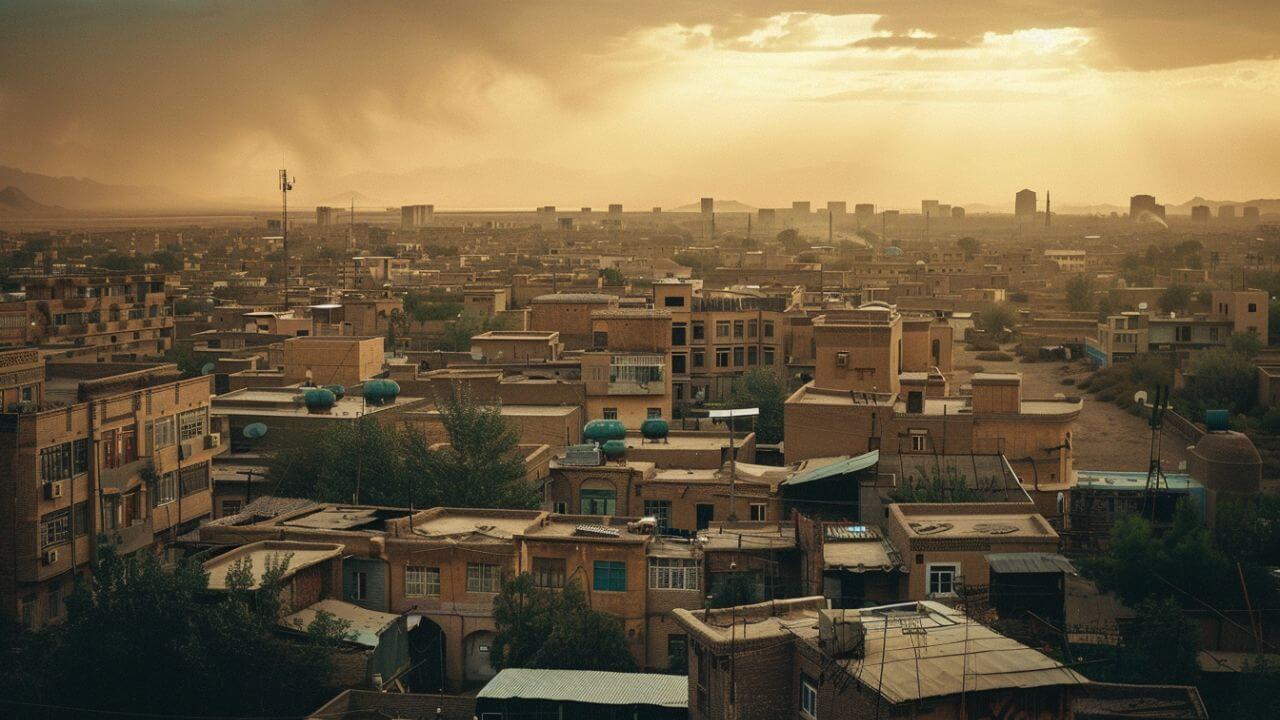
Id Kah Mosque
Id Kah Mosque, located in Kashgar, is the largest mosque in China and a central place of worship for Uyghur Muslims. As a significant cultural landmark, it embodies the rich history and spiritual life of the Uyghur community.
Highlights of Id Kah Mosque
- Stunning Architecture: The mosque’s design features a large open courtyard, surrounded by trees, which leads to the main prayer hall. The building is adorned with intricate tile work, ornate carvings, and arches that reflect traditional Islamic and Uyghur architectural styles. The beautiful minarets, rising above the complex, are especially striking and offer a picturesque view of the mosque.
- Historic Significance: Established in the 15th century, Id Kah Mosque has been a central hub for Islamic worship and community life for over 500 years. It has witnessed significant historical events and remains a symbol of the enduring spiritual and cultural heritage of the Uyghur people.
- Cultural Hub: Beyond being a place of worship, the mosque is a focal point for cultural gatherings and religious education. During major Islamic festivals like Eid, the mosque becomes the heart of communal celebrations, drawing thousands of worshippers from across the region.
- Peaceful Atmosphere: The serene environment within the mosque’s grounds offers a peaceful retreat from the bustling streets of Kashgar. The shaded courtyard, with its greenery and calm surroundings, invites visitors to reflect and soak in the spiritual ambiance.
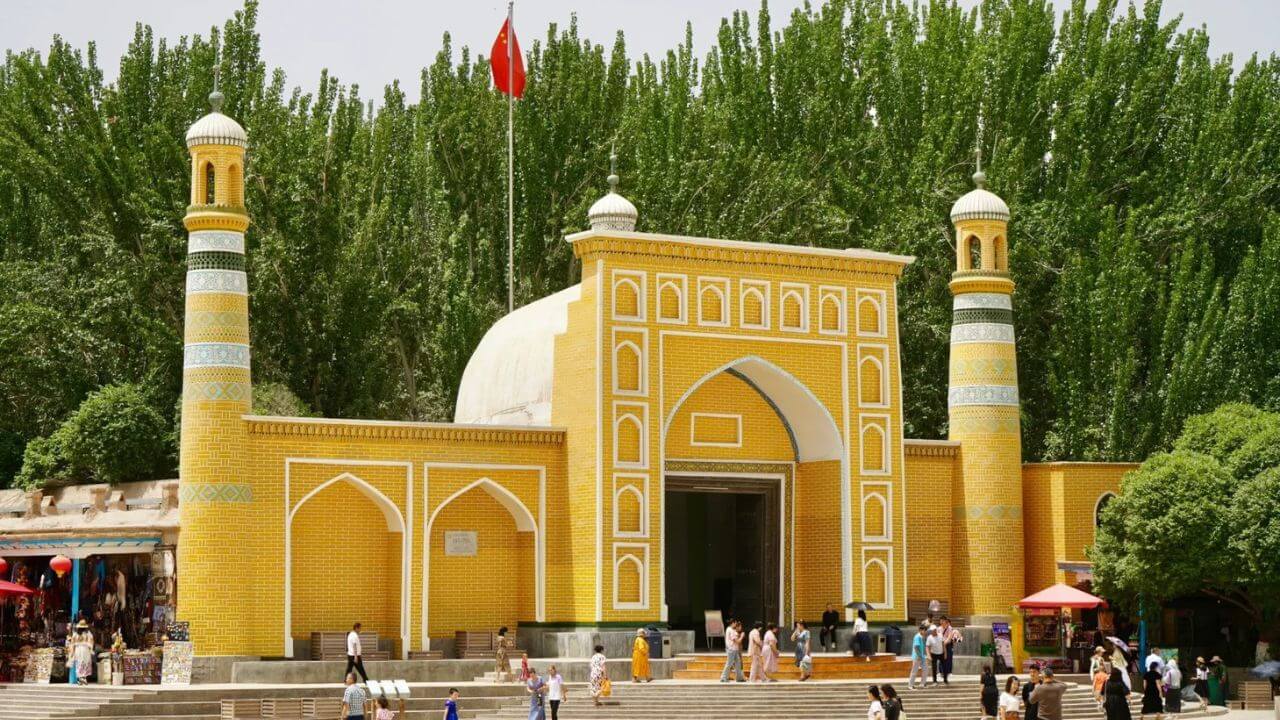
Travel Tips for Visiting Id Kah Mosque
- Dress Modestly: As a place of worship, visitors should wear clothing that covers arms and legs. Women may be required to cover their heads with a scarf.
- Visit During Non-Prayer Times: To fully appreciate the architecture and avoid disrupting worship, plan your visit outside of the five daily prayer times.
- Photography: Photography is generally allowed in the courtyard, but always ask for permission before taking photos, especially inside the prayer hall or of worshippers.
- Respect Local Customs: Be mindful of local customs and traditions, and follow any guidelines provided by mosque staff. Remove your shoes before entering the prayer hall and maintain a quiet, respectful demeanor while on the premises.
Kashgar Old Town
Kashgar Old Town is a captivating maze of narrow alleys, traditional Uyghur homes, and bustling bazaars that transport visitors back in time. This ancient neighborhood, with its rich history and vibrant culture, offers a unique glimpse into the daily life and traditions of the Uyghur people.
Highlights of Kashgar Old Town
- Wandering Through Ancient Streets: The labyrinth of narrow, winding alleys is perfect for exploration. As you wander, you’ll encounter beautifully preserved traditional Uyghur homes, many adorned with intricate wooden balconies and colorful decorations that reflect the area’s rich cultural heritage.
- Local Workshops: The Old Town is alive with skilled artisans practicing their crafts in open-air workshops. Visitors can watch potters, blacksmiths, and carpenters at work, and even purchase handmade goods directly from the craftsmen. These workshops offer a rare opportunity to see traditional techniques passed down through generations.
- Bustling Bazaars: The bazaars of Kashgar Old Town are vibrant hubs of activity, where you can find everything from spices, textiles, and handicrafts to fresh produce and street food. The lively atmosphere and the array of colors, sounds, and scents make it an unforgettable sensory experience.
- Cultural Encounters: As you explore, you’ll have the chance to engage with the local Uyghur community, experiencing their hospitality and learning about their customs. Whether it’s sharing a cup of tea or watching a local performance, these encounters offer a deeper understanding of Uyghur culture.
- Historic Architecture: In addition to residential homes, the Old Town features several historic buildings, including mosques and madrasas, showcasing the architectural influences of Islamic and Central Asian styles.
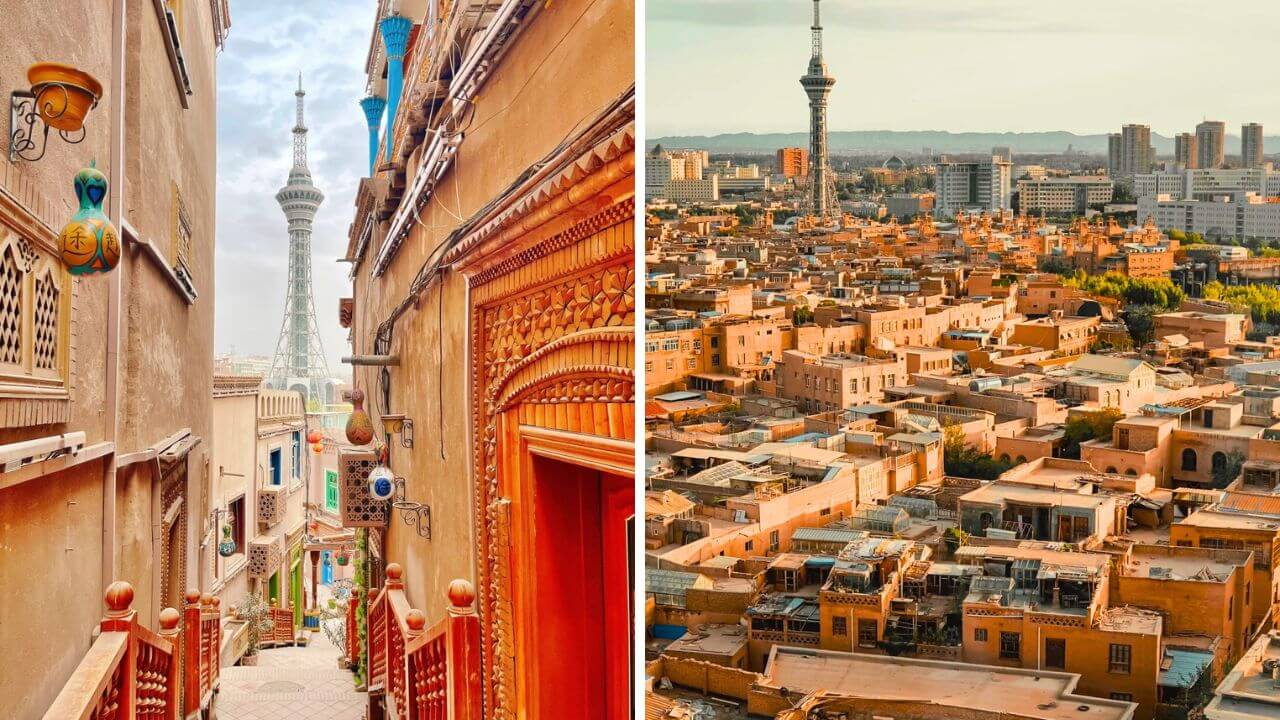
Sunday Market (Kashgar Bazaar)
The Sunday Market is also known as the Kashgar Bazaar. It is one of the largest and most vibrant markets in Xinjiang Province and Notern China. Held every Sunday, this bustling marketplace is a focal point of trade and culture in the region, attracting locals and visitors alike. The market offers a sensory feast with its lively atmosphere, diverse goods, and rich cultural exchanges.
Highlights of Sunday Market (Kashgar Bazaar)
- Vast Array of Goods: The market is a treasure trove of diverse products, ranging from colorful textiles, traditional Uyghur clothing, and intricate handicrafts to an impressive selection of spices, dried fruits, and local delicacies. The variety and quality of goods make it a paradise for shoppers and culture enthusiasts alike.
- Livestock Section: One of the most fascinating parts of the Sunday Market is the livestock section, where traders buy and sell sheep, cattle, camels, and horses. This area offers a glimpse into the traditional way of life and agricultural practices of the region. The lively bargaining and the sheer scale of the livestock trade are sights to behold.
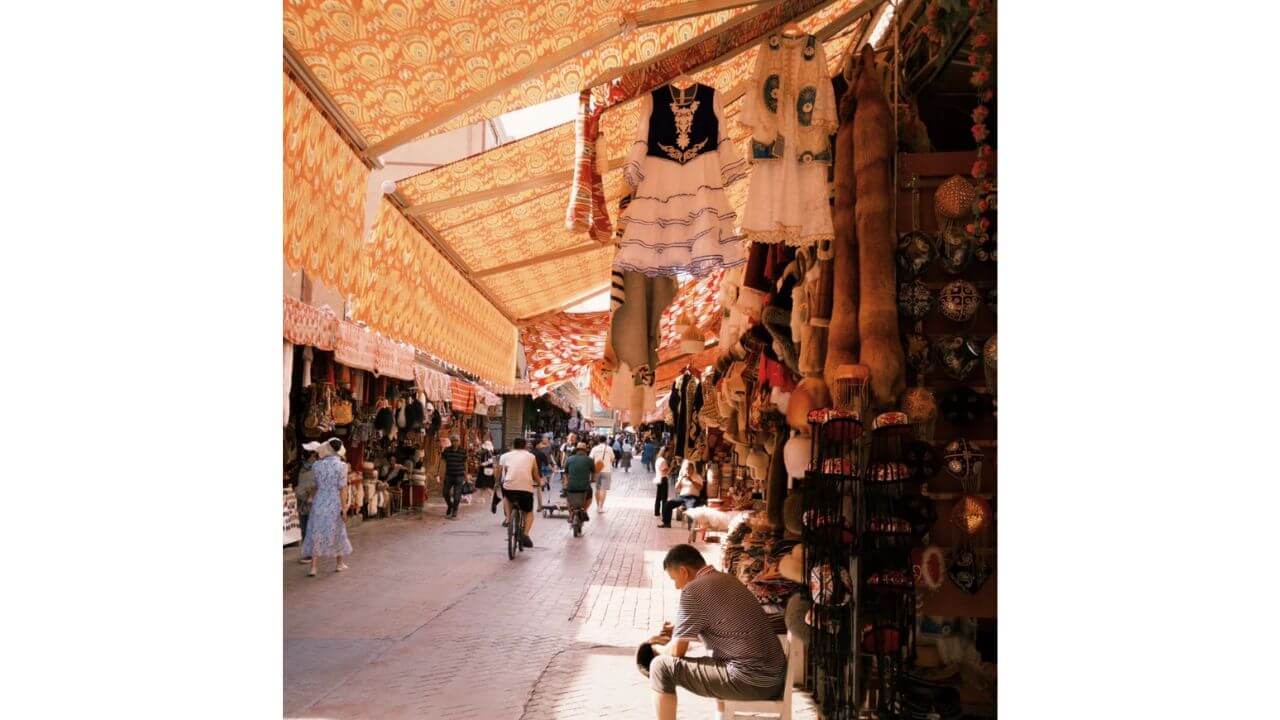
- Cultural Melting Pot: The market is a vibrant mix of different ethnic groups, including Uyghurs, Kyrgyz, Tajiks, and more. This diversity is reflected in the range of goods available and the languages spoken, providing a unique cultural experience.
- Lively Atmosphere: The bustling energy of the market is infectious. From the colorful displays to the sounds of haggling, the market is alive with activity. Street performers, food vendors, and artisans contribute to the lively ambiance, making it a dynamic and engaging experience.
- Food Stalls: The market is also a haven for food lovers. Numerous stalls offer traditional Uyghur dishes such as lamb kebabs, pilaf (polu), and hand-pulled noodles (laghman).
Travel Tips for Visiting Kashgar Bazaar
- The market gets crowded as the day progresses, so arriving early in the morning will give you a more relaxed experience and the chance to see the market come to life.
- Most vendors accept only cash, so ensure you have enough local currency (Chinese Yuan) on hand.
- Bargaining is expected and part of the market experience. Start with a lower offer and negotiate politely; it’s a fun way to engage with the vendors and can lead to better deals.
- If you’re interested in the livestock section, go early, as most action happens in the morning. Even if you’re not buying, it’s a fascinating cultural experience.
- As with any crowded place, keep an eye on your belongings. Carry a secure bag and be mindful of your valuables.
Apak Hoja Tomb (Fragrant Concubine’s Tomb)
The Apak Hoja Tomb, also known as the Fragrant Concubine’s Tomb, is a historic mausoleum complex near Kashgar. It houses the tombs of the Apak Hoja family, including the legendary Fragrant Concubine. Known for its serene atmosphere and stunning Islamic architecture, this site is a must-visit for those interested in the region’s rich cultural heritage.
Highlights of Apak Hoja Tomb
- Islamic Architecture: The mausoleum showcases beautiful Islamic architecture, with grand domes, intricate tile work, and decorated arches. The green-tiled dome is particularly striking, symbolizing the spiritual significance of the site.
- Fragrant Concubine Legend: The tomb is linked to the Fragrant Concubine, a figure of Uyghur folklore known for her beauty and natural fragrance, offering a connection to local cultural history.
- Serene Surroundings: Set within peaceful gardens and courtyards, the tomb provides a tranquil space for reflection and a retreat from the busy streets of Kashgar.
- Historical Significance: The site is the resting place of the influential Apak Hoja family, offering insights into the region’s religious and political history.
- Cultural Importance: The tomb remains a site of cultural and religious significance for the Uyghur community, adding a living dimension to its historical importance.
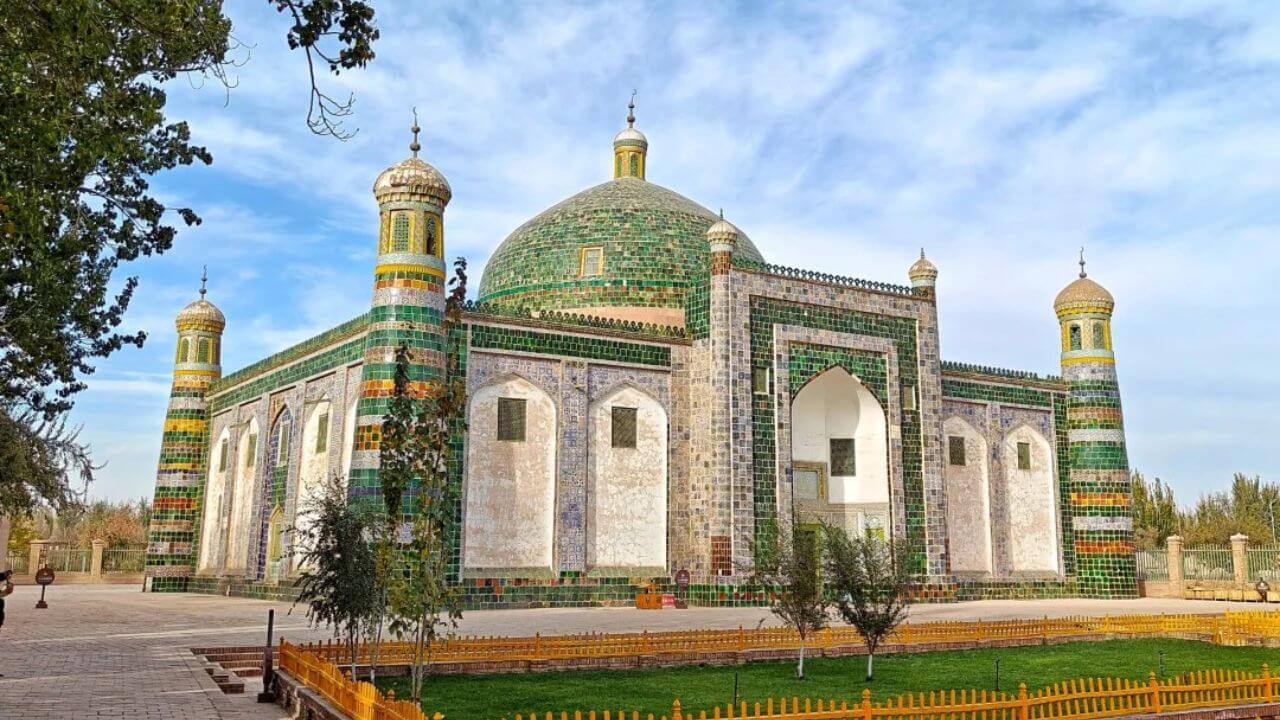
Travel Tips for Visiting Apak Hoja Tomb
- Visit early in the morning or late afternoon for softer light and fewer crowds.
- As a religious site, dress modestly, covering shoulders and knees. Women should consider bringing a headscarf.
- Be mindful of the site’s cultural and religious significance, especially around local worshippers.
- Take time to enjoy the gardens and courtyards, which enhance the site’s natural beauty and peaceful atmosphere.
- The grounds are generally accessible, but comfortable shoes are recommended due to uneven terrain.
Gaotai Ancient Homes
The Gaotai Ancient Homes are a collection of traditional Uyghur residences built on the cliffs of Kashgar. These historic homes showcase unique architectural styles that have been passed down through generations, offering visitors a fascinating glimpse into the traditional Uyghur way of life. The homes, perched on the edge of cliffs, provide a striking example of how the local community has adapted to their environment over centuries.
Highlights of Gaotai Ancient Homes
- Unique Architecture: The Gaotai Ancient Homes are notable for their distinctive construction, utilizing local materials such as mud bricks and timber. The homes are built on the cliffs, with some structures appearing almost as extensions of the natural landscape. Their design reflects the ingenuity and resourcefulness of the Uyghur people in creating comfortable living spaces in challenging terrain.
- Traditional Uyghur Way of Life: Exploring the Gaotai Ancient Homes offers a rare opportunity to step back in time and experience the traditional lifestyle of the Uyghur community. Visitors can see how these homes were designed to accommodate large extended families and observe the functional yet artistic elements that characterize Uyghur interior design, such as intricately carved wooden doors and colorful textiles.
- Cultural Insight: A visit to these homes provides insight into the daily routines, customs, and social structures of Uyghur families. It’s a chance to understand how traditional practices have been preserved and passed down through generations, despite the changing world around them.
- Scenic Views: The location of the Gaotai Ancient Homes on the cliffs offers stunning views of Kashgar and the surrounding landscape. The vantage point provides a unique perspective on the city and its historical development, with the ancient homes serving as a tangible link to Kashgar’s past.
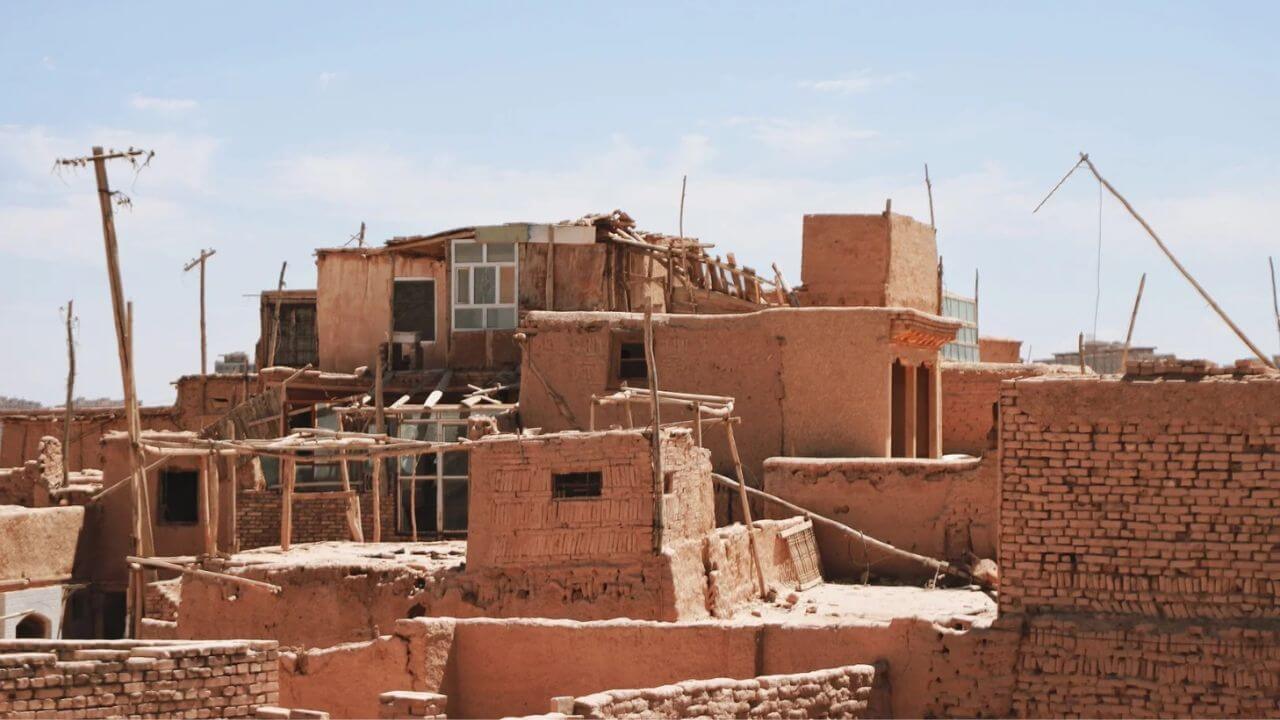
Travel Tips for Visiting Gaotai Ancient Homes
- Visit in the early morning or late afternoon for the best light and cooler temperatures.
- Wear sturdy shoes, as the terrain can be uneven, especially when navigating the narrow paths and stairs leading to the homes.
- The unique architecture and scenic views make the Gaotai Ancient Homes a great spot for photography.
- While exploring the homes, remember that these are still living spaces for many families. Engage respectfully with residents and be mindful of their customs and traditions.
- The cliffside location and narrow paths may present challenges for visitors with mobility issues. If accessibility is a concern, consider checking with local guides or tour operators for advice.
Turpan
Turpan, also known as Turfan. It is one of the most visited cities in Xinjiang Province. It is a fascinating city situated in the Turpan Depression, one of the lowest and hottest places in China, the city is famous for its extreme climate, ancient Silk Road history, and rich cultural heritage. Turpan’s unique landscape, with its sun-scorched deserts, lush vineyards, and ancient ruins, offers a blend of natural beauty and historical intrigue.
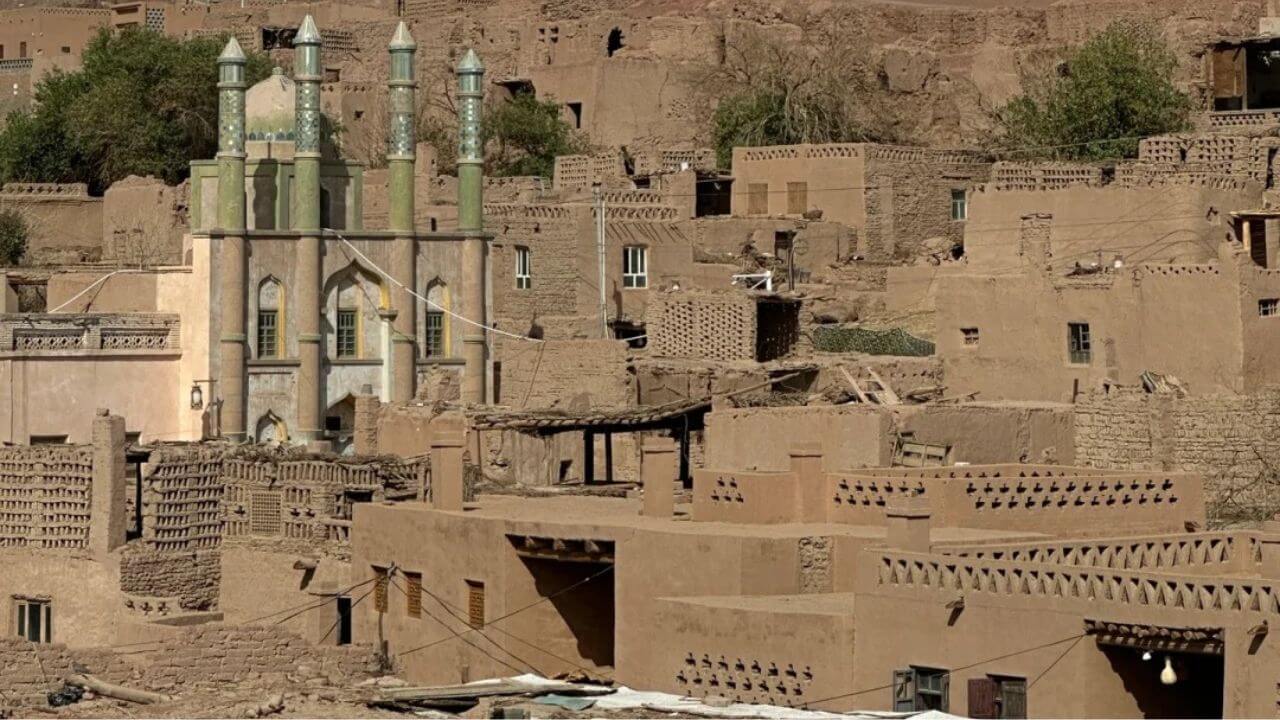
Jiaohe Ancient City
Jiaohe Ancient City, over 2,300 years old, is one of China’s best-preserved ancient cities. Located atop a plateau, the city is carved directly from the earth, offering a unique glimpse into ancient urban planning and architecture.
What to do at Jiaoche Ancient City
- Explore well-preserved ruins, including residential areas, temples, and government offices.
- Discover the city’s strategic layout, designed for defense, with natural earth walls and a moat.
- Enjoy panoramic views of the surrounding landscape from the city’s elevated position.
Travel Tips
- Visit early in the morning or late afternoon to avoid the heat and crowds.
- Wear comfortable shoes for walking on uneven terrain.
- Bring water and sun protection, as there is limited shade on the plateau.
- Consider hiring a local guide for a deeper understanding of the site’s history and significance.
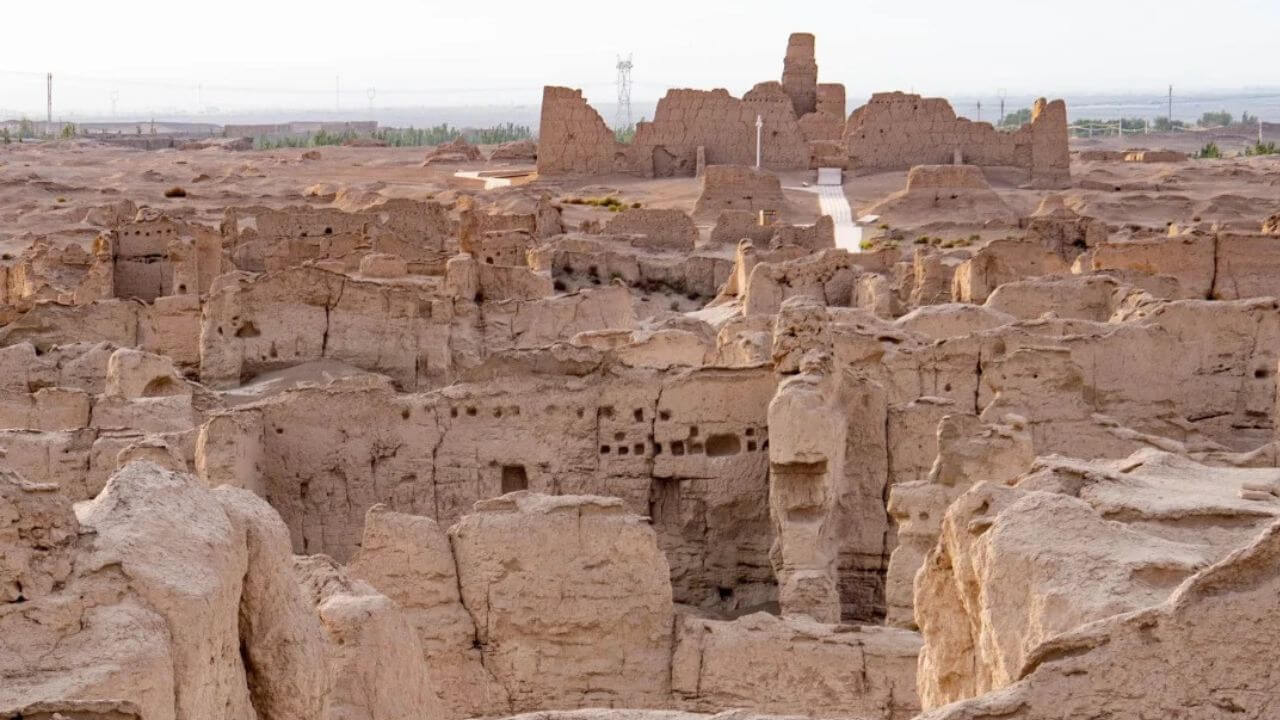
Emin Minaret
The Emin Minaret, also known as the Sugong Tower, is the tallest minaret in China, built in 1778. This iconic structure showcases exquisite Islamic architecture and serves as a symbol of the region’s cultural heritage.
Highlights
- Marvel at the intricate brickwork and elegant design of the 44-meter-tall minaret.
- Explore the adjacent mosque, adding to the site’s serene and spiritual atmosphere.
- Learn about the historical significance of the minaret in the context of the local Uyghur culture.
Travel Tips
- Visit during the early morning or late afternoon for the best lighting for photography.
- Dress modestly out of respect for the site’s religious significance.
- Take time to explore the surrounding area and nearby bazaars for a deeper cultural experience.
- Consider a guided tour to learn more about the architectural details and historical context.
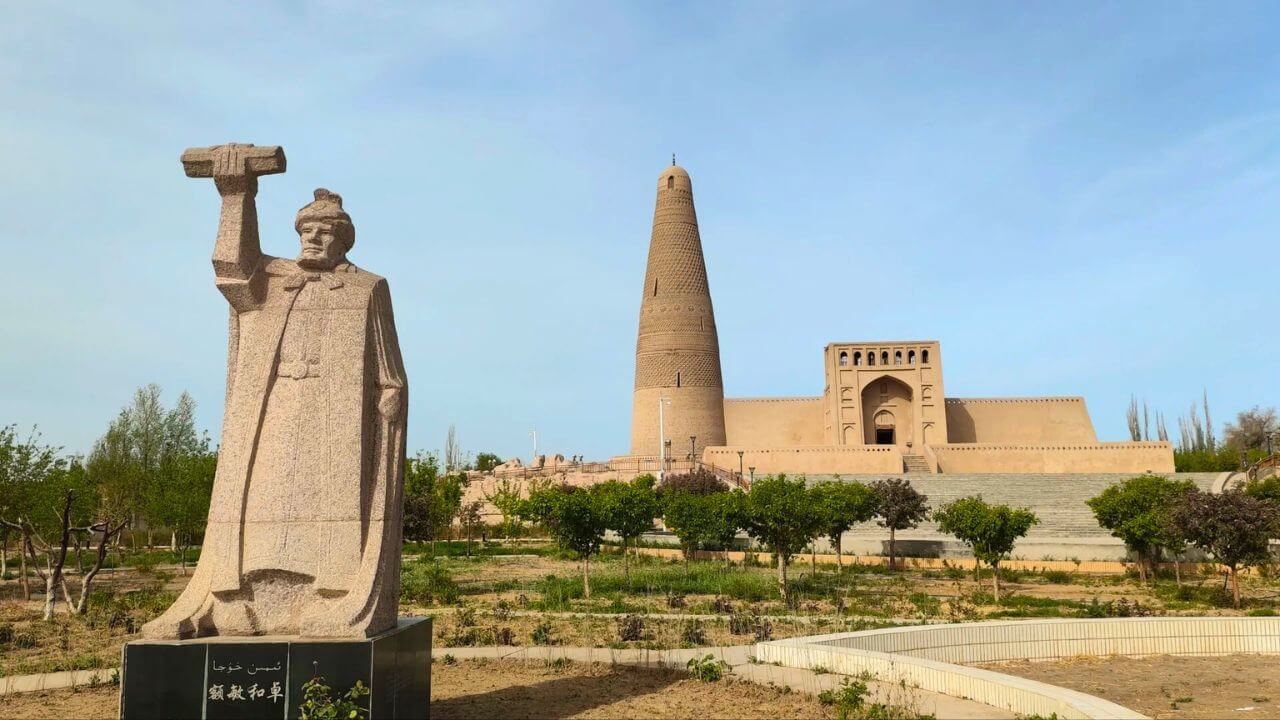
Gaochang Ancient City
Gaochang Ancient City, once a thriving multicultural hub and major stop on the Silk Road, was abandoned in the 14th century. Its extensive ruins offer a fascinating glimpse into the region’s rich history and cultural diversity.
Highlights at Gaochang Ancient City
- Walk through the impressive outer walls and gates that once protected this vital Silk Road city.
- Explore the remains of temples, residential quarters, and other structures that highlight the city’s diverse cultural influences.
- Immerse yourself in the vast scale of the site, which reflects Gaochang’s historical importance.
Travel Tips
- Give yourself plenty of time to fully explore the extensive ruins; the site covers a large area.
- Wear comfortable walking shoes and bring sun protection, as the site is mostly exposed with little shade.
- Visit in the cooler months or early in the day to avoid the intense heat.
- Consider hiring a knowledgeable guide to enrich your understanding of the site’s history and significance.
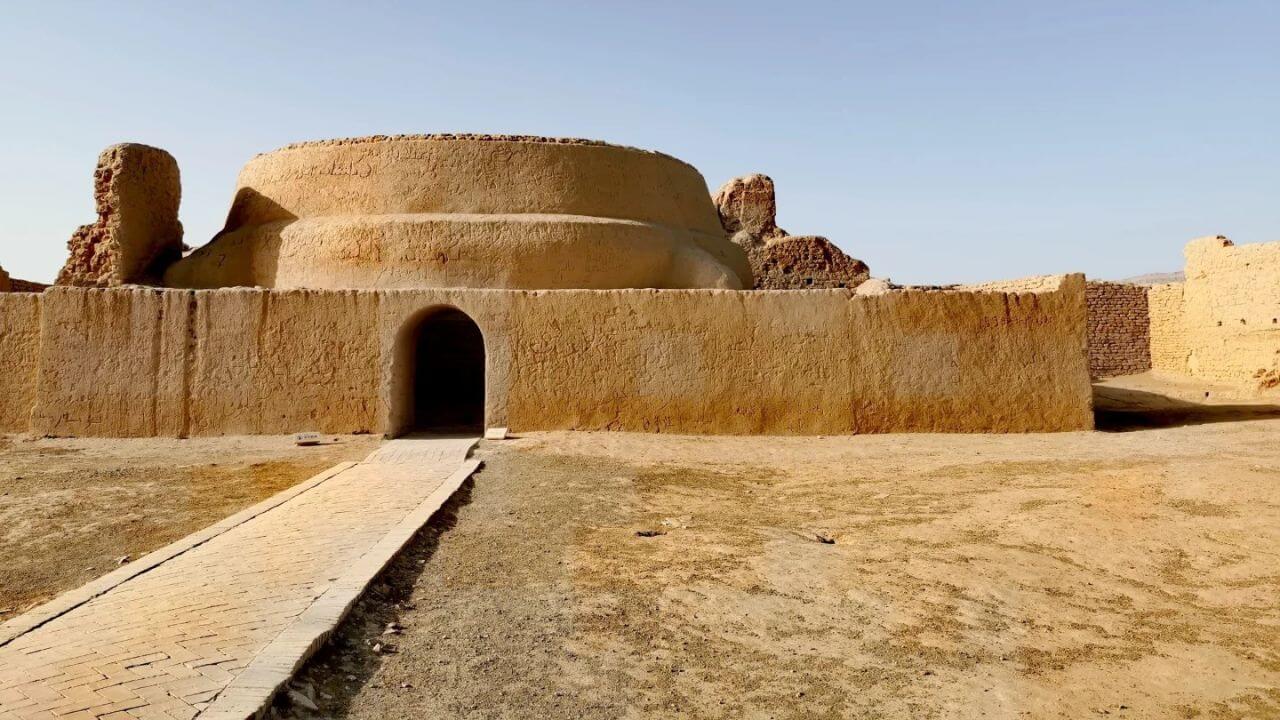
Bezeklik Thousand Buddha Caves
The Bezeklik Thousand Buddha Caves are a remarkable complex of Buddhist grottoes carved into the cliffs of the Flaming Mountains, with origins dating back to the 5th to 14th centuries. These caves were once a vibrant center of Buddhist worship and artistic expression along the Silk Road. Despite damage over the centuries, the remaining murals and statues still provide a captivating insight into the region’s Buddhist heritage and the rich cultural exchange that occurred in this area.
Highlights
- Murals and Art: The caves were once adorned with vibrant murals depicting Buddhist deities, monks, and scenes from Buddhist scriptures. Although many murals were damaged or removed, the surviving artwork still showcases the intricate craftsmanship and spiritual significance of the time. The detailed depictions of figures in the murals offer a window into the artistic styles and religious practices of ancient civilizations that passed through the Silk Road.
- Architectural Layout: The caves vary in size and complexity, with some containing large central halls for worship and others featuring smaller, more intimate meditation spaces. The architectural diversity of the caves reflects the evolving needs of the Buddhist communities that inhabited the area over the centuries.
Cultural Significance: As a key site along the Silk Road, the Bezeklik Thousand Buddha Caves were influenced by a mix of cultures, including Indian, Persian, and Chinese. This cultural melting pot is evident in the artistic styles and iconography found within the caves. Visiting the site offers a profound understanding of the region’s role in the transmission of Buddhism across Asia.
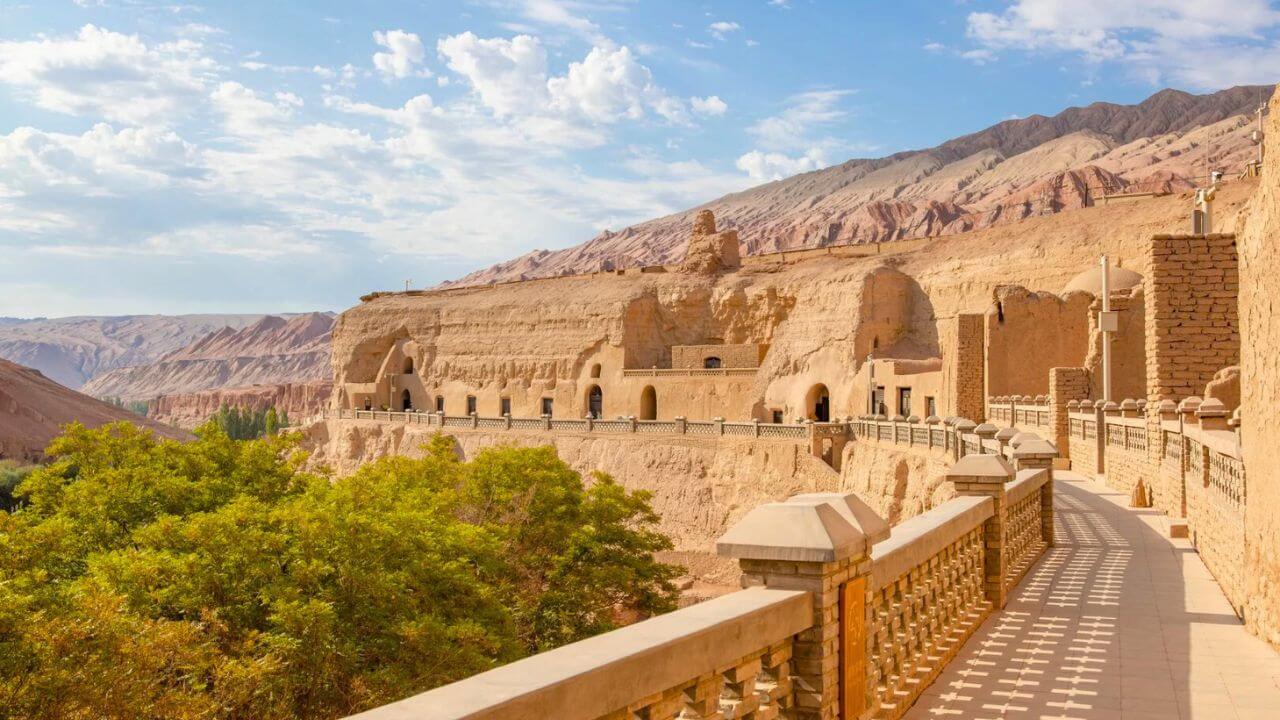
Travel Tips
- Visit in the early morning or late afternoon to avoid the intense midday heat, especially given the caves’ location in the Flaming Mountains.
- Consider hiring a knowledgeable guide to gain deeper insights into the historical and religious significance of the caves and to help identify the details in the murals that might be easy to overlook.
- While photography is allowed in some areas, be respectful of signs indicating where it is prohibited, especially to protect the delicate murals from light exposure.
- Combine your visit with other nearby historical sites, such as the Gaochang Ancient City or the Astana Tombs, to get a broader understanding of the region’s rich history and cultural significance.
Karez Irrigation System
The Karez Irrigation System is an ancient and ingenious underground water network unique to the Turpan region in China. Developed over 2,000 years ago, this system efficiently transports water from the snow-capped Tianshan Mountains to the arid plains of Turpan, ensuring a reliable water supply for agriculture in one of the driest places on earth. The Karez system consists of a series of wells, underground tunnels, and channels that use gravity to deliver water across long distances, showcasing remarkable engineering and adaptation to the harsh environment.
Highlights
- Ingenious Engineering: The Karez system is a marvel of ancient engineering, comprising thousands of kilometers of underground tunnels that channel water with minimal evaporation loss. The tunnels, often stretching for tens of kilometers, connect a series of wells that allow water to flow from higher elevations to the lower plains. This method conserves water and protects it from the intense heat of the Turpan desert.
- Karez Museum: The Karez Museum offers an in-depth look at the history, construction, and operation of this ancient irrigation system. Exhibits include detailed models, diagrams, and interactive displays that explain how the system works and its vital role in sustaining life and agriculture in Turpan. Visitors can also see sections of the actual tunnels and wells, providing a tangible connection to this ancient technology.
- Agricultural Impact: The Karez system has been crucial to the development of agriculture in Turpan, allowing the region to become a fertile oasis despite its arid climate. The system supports the cultivation of grapes, melons, and other crops that thrive in the area, making it an essential part of the local economy and culture.
Travel Tips
- Visit the Museum: Start your exploration at the Karez Museum to gain a comprehensive understanding of the system before venturing out to see the actual wells and channels. Best Time to Visit: Visit during the cooler months or early in the day to avoid the intense desert heat.
- Photography: The museum and surrounding areas offer excellent opportunities for photography, especially of the intricate models and real sections of the Karez system.
- Combine with Other Sites: The Karez Irrigation System can be part of a broader itinerary that includes other historical and cultural sites in Turpan, such as the Jiaohe Ancient City and the Bezeklik Thousand Buddha Caves, for a fuller experience of the region’s heritage.
Flaming Mountains
The Flaming Mountains are a dramatic range of red sandstone hills located in the Turpan Basin of Xinjiang Province. These mountains, which can reach temperatures of up to 50°C (122°F) during the summer, appear to glow under the intense heat of the sun, giving them their fiery name. The Flaming Mountains are steeped in legend and are famously mentioned in the Chinese classic “Journey to the West.” Their unique appearance and proximity to other significant historical sites, such as the Bezeklik Thousand Buddha Caves, make them a must-visit attraction in the region.
Highlights at Flaming Mountains
- Striking Appearance: The Flaming Mountains are renowned for their vivid red color, which intensifies under the harsh sunlight, creating the illusion that the mountains are aflame. The range’s rugged terrain and steep cliffs add to its awe-inspiring presence, making it a popular spot for photography and sightseeing.
- “Journey to the West” Connection: The Flaming Mountains are immortalized in the classic Chinese novel “Journey to the West,” where they play a significant role in the adventures of the Monkey King, Sun Wukong. This literary connection adds a layer of cultural and historical significance to the site, attracting fans of the novel and those interested in Chinese folklore.
- Nearby Attractions: The mountains are located near several other key sites in the Turpan region, including the Bezeklik Thousand Buddha Caves and the Gaochang Ancient City. Visiting these nearby attractions offers a comprehensive exploration of the area’s rich history, culture, and natural beauty.
- Extreme Temperatures: The Flaming Mountains hold the record for some of the highest temperatures in China, often exceeding 50°C (122°F) during the summer. The heat, combined with the reddish sandstone, creates a truly unique natural phenomenon that has fascinated visitors for centuries.
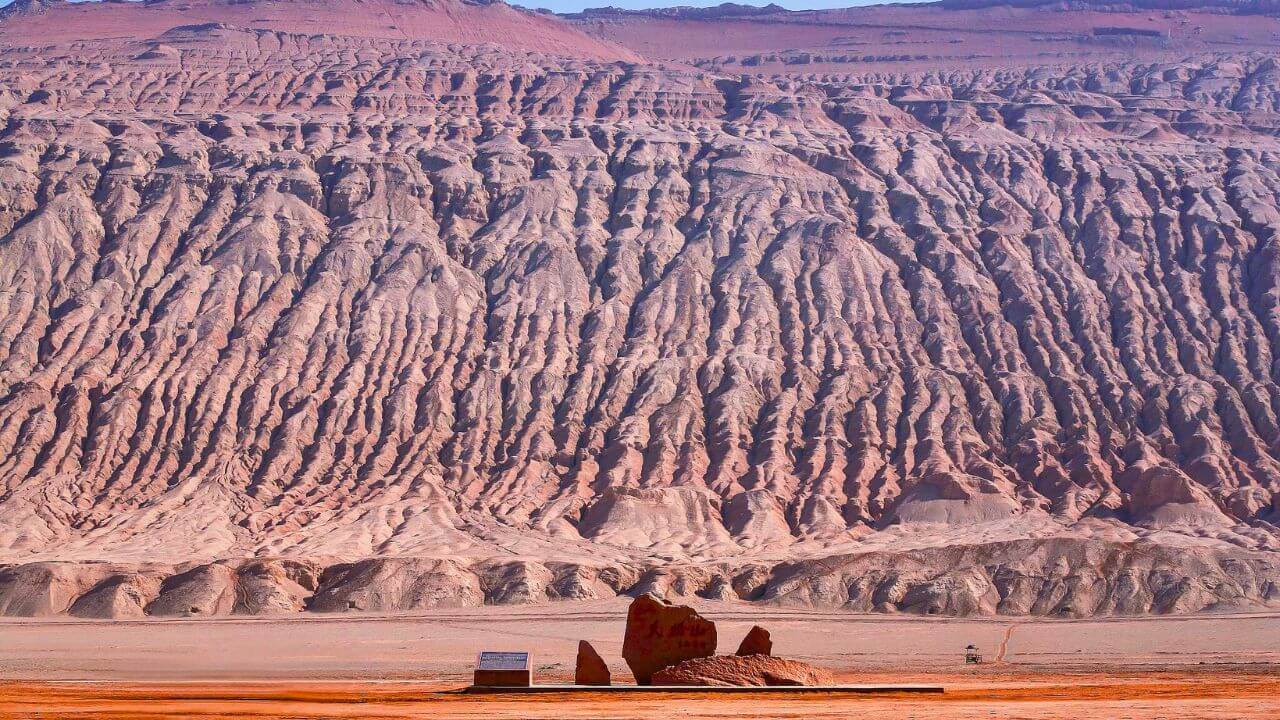
Travel Tips
- To avoid the extreme heat, visit the Flaming Mountains early in the morning or late in the afternoon. The lighting during these times also enhances the fiery appearance of the mountains, making for great photographs.
- Given the intense heat of the area, it’s crucial to bring plenty of water and stay hydrated throughout your visit. Wearing light, breathable clothing and a hat is also recommended to protect against the sun.
- The mountains are most photogenic during sunrise or sunset when the sunlight casts dramatic shadows and intensifies the red hues.
- Plan your trip to include nearby attractions like the Bezeklik Thousand Buddha Caves or the Karez Irrigation System. This will give you a fuller understanding of the region’s history and cultural significance while maximizing your travel experience.
Final Words About What to Visit in Xinjiang Province
Xinjiang Province is a mixture of history, culture, and natural beauty. Must-visit sites include the ancient ruins of Jiaohe and Gaochang, showcasing Silk Road heritage; the Flaming Mountains and Bezeklik Thousand Buddha Caves, blending natural wonder with Buddhist art; and the ingenious Karez Irrigation System, a marvel of ancient engineering. Don’t miss the Emin Minaret, a stunning example of Islamic architecture. Whether exploring vibrant bazaars or vast deserts, Xinjiang promises a unique journey through one of China’s most diverse and culturally significant regions.

Helen Wang
Travel Advisor & Guide Expert
I started my travel career in 2005 and have since become an expert in Tibet and China’s travel destinations and helping travelers plan unforgettable trips.
For expert travel advice to China or Tibet, feel free to contact me.